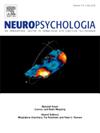探讨形容词线索在大小判断中的作用及神经电生理机制
IF 2
3区 心理学
Q3 BEHAVIORAL SCIENCES
引用次数: 0
摘要
许多有影响的理论都试图阐明语言和思想之间的关系。关于语言和思维是否是不同的实体,或者语言是否深深嵌入个人认知过程的争论仍在继续。本研究以形容词线索结合心理意象大小判断任务为实验范式,运用神经生理学技术,初步探讨形容词在大小判断任务中的作用及其潜在的神经生理学机制。研究结果表明,当形容词与物体的大小一致时,表现最好,脑电图微状态结果表明,在这种情况下,与语言网络相关的A类活动很强。此外,当形容词与物体大小冲突时,Ni成分的发现表明个体监控和抑制形容词与物体大小的冲突,导致在这种情况下任务绩效下降。此外,当物体的大小是模糊的,个体的大小判断不明显受益于明确的形容词线索。事件相关电位和脑电图微态结果表明,在这种情况下,自上而下的认知资源被更广泛地募集。总之,语言在简单的判断任务中起着更重要的作用;当任务变得更加复杂时,判断过程需要更多分散的大脑区域协同工作,而语言系统仍然保持活跃。这项研究为理解语言和简单思维之间的关系提供了初步的认知神经科学证据,为未来研究语言和思维之间的关系提供了初步的见解。本文章由计算机程序翻译,如有差异,请以英文原文为准。
Examining the role and neural electrophysiological mechanisms of adjective cues in size judgment
Numerous influential theories have attempted to elucidate the relationship between language and thought. The debate persists on whether language and thought are distinct entities or if language is deeply embedded in individual cognitive processes. This study employs adjective cues combined with a mental imagery size judgment task as an experimental paradigm, utilizing neurophysiological techniques to preliminarily explore the role of adjectives in size judgment tasks and their underlying neurophysiological mechanisms. Findings reveal that performance is best when adjectives are congruent with the size of the object, with EEG microstate results indicating strong activity in Class A, related to language networks under this condition. Additionally, when adjectives conflict with object size, the discovery of the Ni component suggests that individuals monitor and inhibit the conflict between adjectives and object size, leading to decreased task performance in this condition. Moreover, when object size is ambiguous, individuals' size judgments do not benefit significantly from clear adjective cues. Event-related potentials and EEG microstate results suggest that under this condition, top-down cognitive resources are recruited more extensively. In conclusion, language plays a more crucial role in simpler judgment tasks; as tasks become more complex, judgment processes engage a greater number of distributed brain regions to collaborate, while the language system remains active. This study provides initial cognitive neuroscience evidence for understanding the relationship between language and simple forms of thought, offering preliminary insights for future investigations into the connection between language and thought.
求助全文
通过发布文献求助,成功后即可免费获取论文全文。
去求助
来源期刊

Neuropsychologia
医学-行为科学
CiteScore
5.10
自引率
3.80%
发文量
228
审稿时长
4 months
期刊介绍:
Neuropsychologia is an international interdisciplinary journal devoted to experimental and theoretical contributions that advance understanding of human cognition and behavior from a neuroscience perspective. The journal will consider for publication studies that link brain function with cognitive processes, including attention and awareness, action and motor control, executive functions and cognitive control, memory, language, and emotion and social cognition.
 求助内容:
求助内容: 应助结果提醒方式:
应助结果提醒方式:


